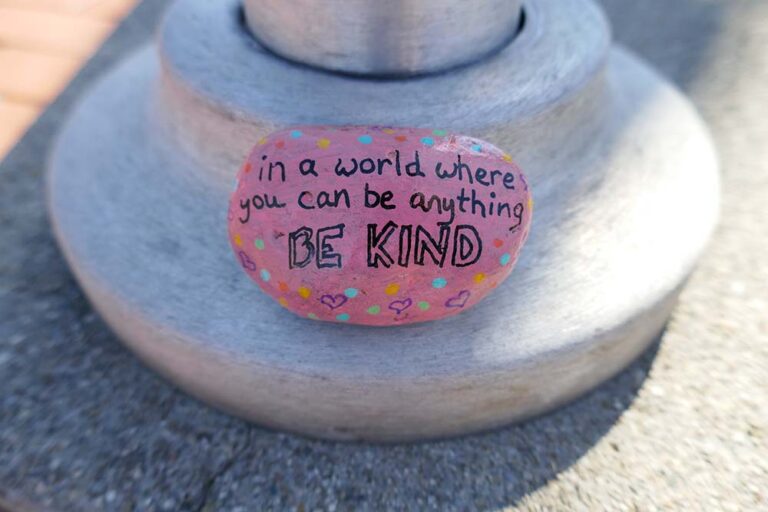Having consulted in the Diversity, Equity & Inclusion (DEI) space for the past 25 years, I’ve seen a lot of organizations approach it in ways that are doomed from the start. Although their efforts may be well-intentioned, you can’t “do” diversity. It’s not a box to be checked.
However, that’s exactly what many companies try to do. In the wake of the horrific events of 2020 that put social justice at the forefront, my email box was brimming with inquiries. Can you guess what the most common request was?
Training.
They went something like this: “Can you please come and do diversity training?” “Can you train our leaders to lead (insert underrepresented group) more effectively?” “Can you train our managers to not say insensitive things to colleagues of a different color/faith/ethnicity?” My answer was always the same.
Training alone won’t work. To make a difference, DEI efforts can’t be transactional. They must be transformational.
And when done right, they are transformational… to your culture and to your bottom line. Whatever your reasons are for putting a spotlight on DEI, your organization is likely to see a strong ROI for your efforts if done in a holistic manner, rooted in a change management approach.
In Mckinsey’s third study on the value of organizational diversity, released in May 2020 and analyzing companies in pre-pandemic 2019, the results were clear. Companies with high levels of gender diversity on executive teams were 25 percent more likely to experience above-average profitability than peer companies with minimal gender diversity. And among companies with high levels of ethnic and cultural diversity, the survey found they outperformed those with low ethnic/cultural diversity by 36 percent in terms of profitability. Similar results were found in prior years’ studies, but the gains have increased over time.
When you coach behaviors and not results, you’ll see repeatable success.
That doesn’t happen through a workshop series or training session. In order to “stick,” diversity, equity & inclusion efforts must connect to business objectives. They can never be thought of as a separate initiative with goals established in a vacuum. When organizations are intentional and holistic about belonging and inclusion, they can align these efforts with the company culture, leveraging behavioral and demographic differences to support business growth.
The growth is not just financial. Additional studies show that diversity in people fuels diversity in thought and behavior resulting in teams that innovate, collaborate and make effective decisions on behalf of the business. They can do this because they’re able to see challenges and opportunities from multiple angles.
When you coach behaviors and not results, you’ll see repeatable success. Diversifying the workforce, while also coaching behaviors, are what leading companies do proactively to maintain high-performance culture or make big leaps in meeting customer needs and exceeding expectations. DEI as a pillar of organizational culture supports flexibility and the ability to nimbly respond to competitive threats, attract the right talent and strengthen culture by ensuring opportunities for every member of the team.
No matter how invested executive leaders are regarding DEI practices, the rubber meets the road between a manager and direct reports. People don’t leave companies; they leave their managers. In effect, great leadership is also great DEI.
Consider the current work climate. As more companies ask employees to return to office, their leaders need to meet people where they are. That means engaging in an equitable manner with each team member, whether they are in the office or will continue to work remotely. This also involves thinking of technology, meeting modalities and the like. And, most importantly, it means providing regular, candid and actionable feedback to each and every team member, respecting diversity in work and learning styles and including everyone in growth opportunities.
People don’t leave companies; they leave their managers… In effect, great leadership is also great DEI.
If you want DEI efforts to succeed at your company, do the following:
- Define diversity. It’s not holding a workshop series or making a poster. If the language in your organization’s vision, mission, or values doesn’t currently address how you’ll make employment fair, equitable and inclusive of all kinds of employees, it’s time to revise them and incorporate diversity as a roadmap to business success.
- Investigate rather than mandate. Hiring five more women in Q1 will not change the culture. You need to change the thought process. What experience are women having within your organization now? Are they seeing meaningful opportunities for growth and advancement? Are there other groups within the organization that have greater advantages or experience marginalization? Find out and work through why that is happening, and how it can be changed.
- Look inward. Answer these questions honestly. What about your culture today supports demographic and behavioral diversity? What doesn’t support it? Can you see obvious elements that need review? Culture change requires a methodical approach and a growth mindset for all leaders and managers.
- Link to performance management. Successful DEI means helping people work more collaboratively with people who are different from themselves, demographically or behaviorally, to bring value to the business. When employees receive effective coaching and performance feedback about how to work with others who have visible or invisible differences, diversity efforts will have greater impact on business goals.
- Expand responsibility. ERGs are great, but they often have limited purviews and lifespans. Make DEI everyone’s priority rather than a select few.
- Get proactive. Your competition is gaining on you. Hiring people who represent your customer base, support your values and make strong cultural contributions enables your organization to more effectively pivot in an everchanging business environment.
- Eliminate us versus them. Remote employees versus office dwellers. Millennials versus Boomers. You can’t allow employees to take sides against one another when they need to function as a unified team, rallying around a common vision. Get rid of narratives that pit internal groups against each other.
- Build on existing foundation. You may have current organizational initiatives underway that, if reviewed with a DEI lens, could be leveraged to achieve both inclusivity and business goals.
As you work to align DEI efforts with overall goals, employees may wonder how far they’ll be bending or stretching to make company culture fit those whose needs are different than their own. A team I am coaching in an organization undergoing cultural change (to better support DEI) posed this question recently: What if somebody asks me for something I think goes too far?
I responded with a two-fold concept: enterprise mindset and sensible guardrails. We want evolving organizations to innovate to provide their customers with the best products and services possible. That may entail outside-the-box working approaches. But to make sure things don’t get out of hand, we can measure requests against our corporate values, our guardrails. Does the request have positive intent? Does the employee demonstrate integrity? Validate the ask, then determine where it makes sense to land for the good of the employee and the good of the organization. This may be a far cry from how your managers respond today. This is yet another example of how we can’t snap our fingers and imagine a different organization; we have to put in the work to help individual employees evolve behaviors.
A change management approach to DEI involves understanding the tools, practices, processes and policies needed to help others interact with each other differently and more effectively. When applied with sustained effort, ROI and tangible results are soon to follow.








